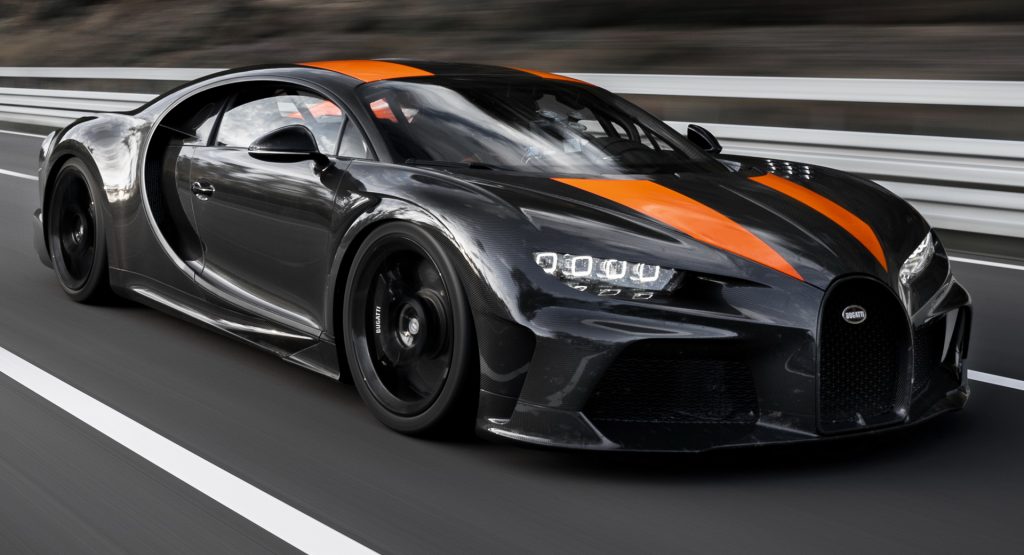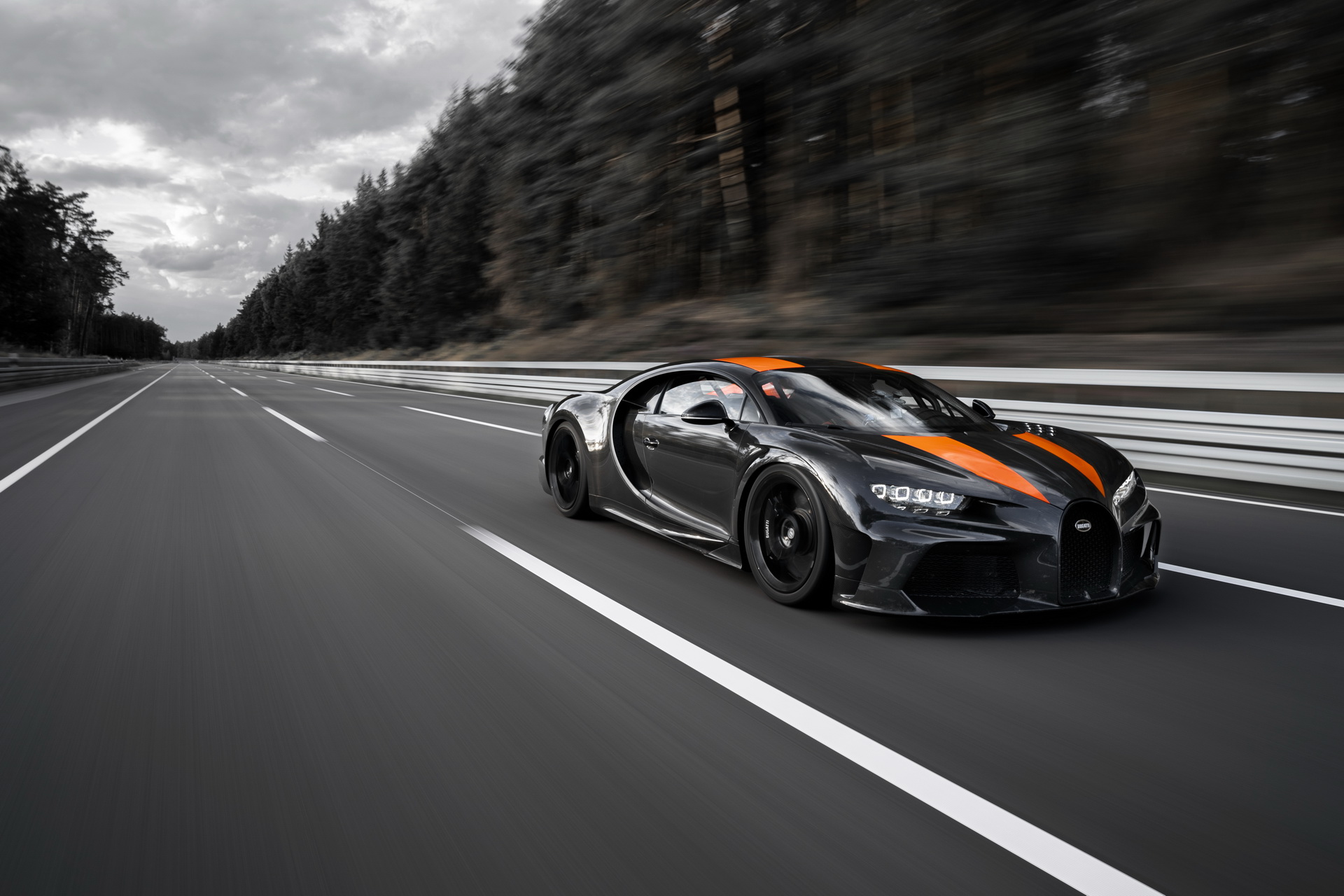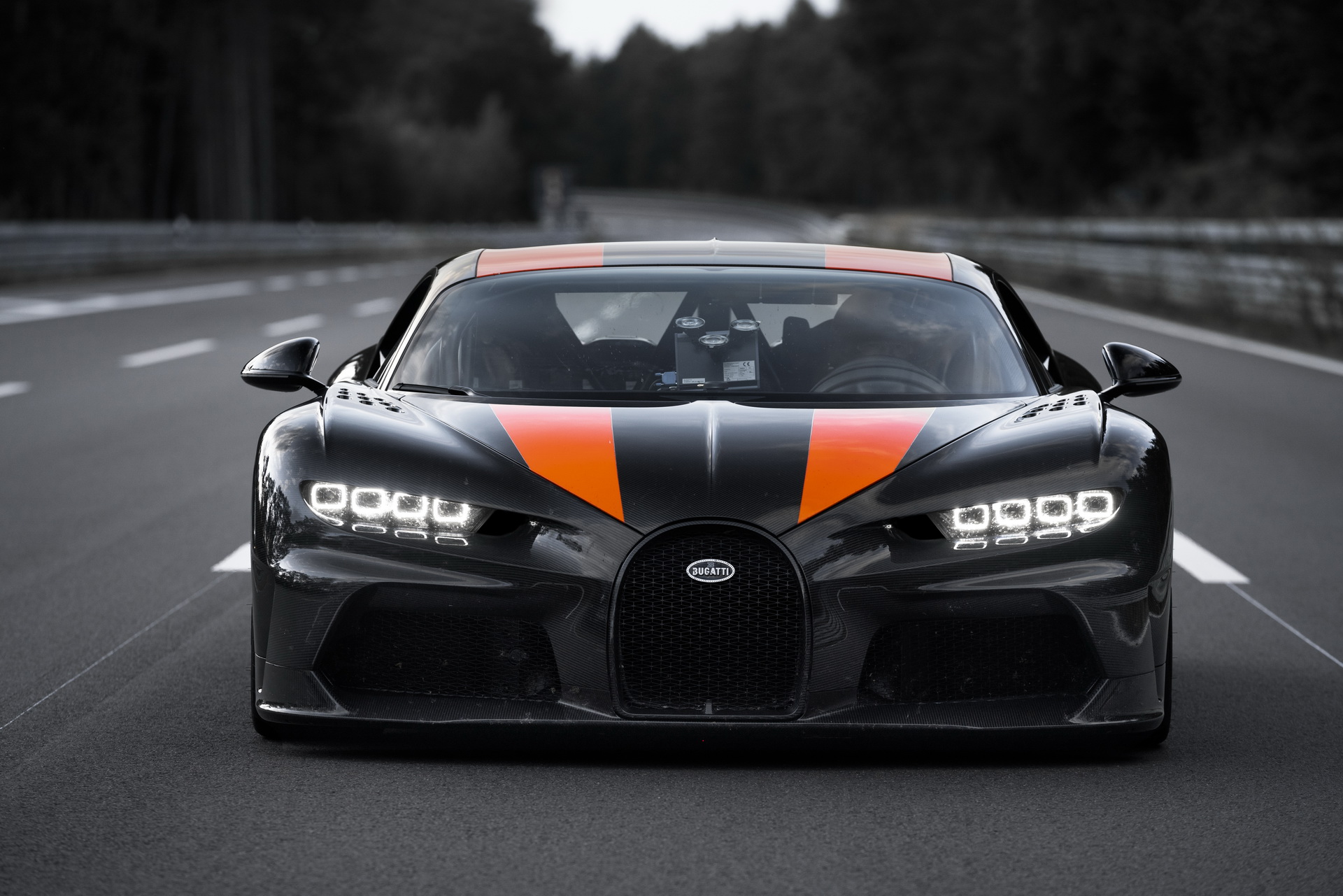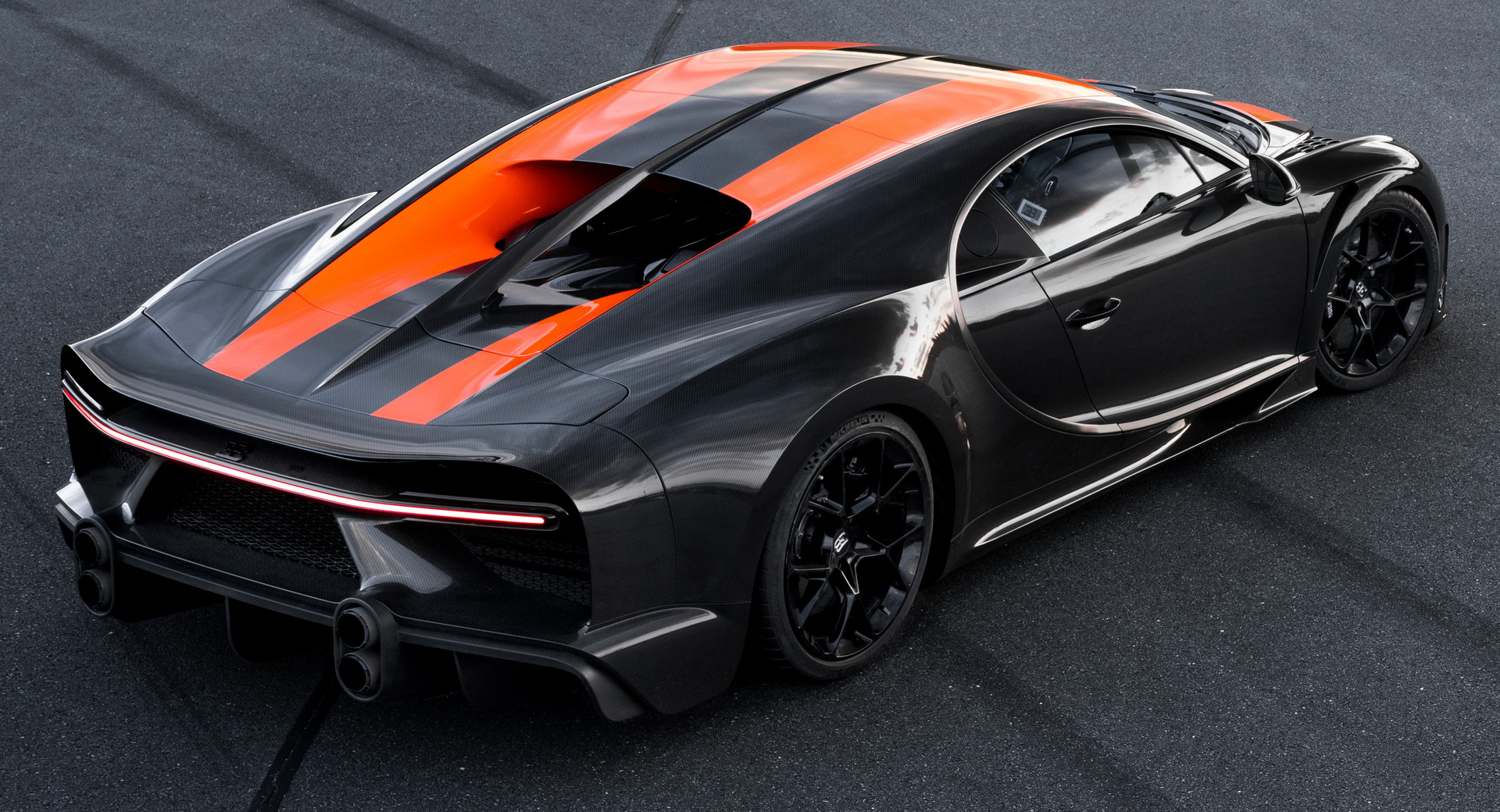A special Bugatti Chiron may have just broken through the 300 mph (482 km/h) barrier but its 304.7 mph top speed has not be verified by Guinness.
You see, for a vehicle to be acknowledged by Guinness, it needs to set speeds in two directions on the same road within 60 minutes before the average of these two runs is calculated. This is how Koenigsegg was able to establish the Agera RS as the world’s fastest production car with a two-way average of 277.87 mph (447 km/h) on a stretch of road in Nevada. The Bugatti only set a top speed in one direction.
According to Top Gear, this is because the surface at Volkswagen’s Ehra-Lessien surface has started to roll in a clockwise direction because that’s the direction most cars travel that have been tested at the facility over the decades. Bugatti claims running in the opposite direction could cause huge heat build-up in the tires.
Also Watch: Finally, We Get To See The Bugatti Chiron Sport Do A Top Speed Run!
Curiously, the Bugatti Veyron Super Sport set a two-way average at Ehra-Lessien in 2010 to establish itself as the then world’s fastest production car.
In a press release, Bugatti says it was fighting against air density during the top speed run because Ehra-Lessien is located at sea level. The French car manufacturer claims that if it had taken the Chiron high-speed prototype to the same road in Nevada that Koenigsegg used in 2017, it could have clocked a 16 mph (25 km/h) higher top speed because that road sits at an altitude of around 1000 meters (3280 feet) and has thinner air.
“Our calculations have shown that we would have been around 25 km/h faster in Nevada,” Bugatti head of development Stefan Ellrott says. “Safety comes first at Bugatti. The route in Nevada is very long and only goes in one direction: security forces would have taken too long to get to the scene in an emergency. In addition, the track has a slight gradient of about three percent. It wouldn’t have felt right to set a record there.”






